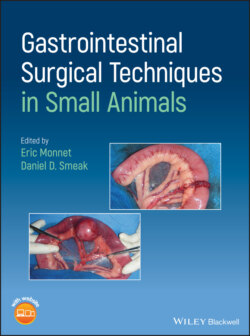Читать книгу Gastrointestinal Surgical Techniques in Small Animals - Группа авторов - Страница 41
3.1 One‐ or Two‐Layer Closure
ОглавлениеAlthough this is still a controversial topic, both techniques have potential downfalls that could endanger an anastomosis. One would think two‐layer closures are better than one‐layer since they might provide added strength initially. However, they increase the inflammatory response in the early stages of visceral healing owing to the extra tissue handling, suture material, and ischemia of the inverted tissue cuff (Orr 1969; McAdams et al. 1970; Goligher et al. 1977). Excess inflammation at the healing site results in a weaker anastomosis as more collagen is broken down during the inflammatory and debridement phases of healing. Advocates of single‐layer closures argue that this technique results in a larger lumen with less damage to the tissue edges (Thornton and Barbul 1997). Currently, in most conditions, a single‐layer closure for most gastrointestinal repairs is considered adequate (Sajid et al. 2012). Provided the lumen is not compromised, double‐layer repairs are sometimes elected when the surgeon expects higher intraluminal pressures, or when the tissue edge is considered extra friable or when sutures in the first layer tend to cut through the tissue.
